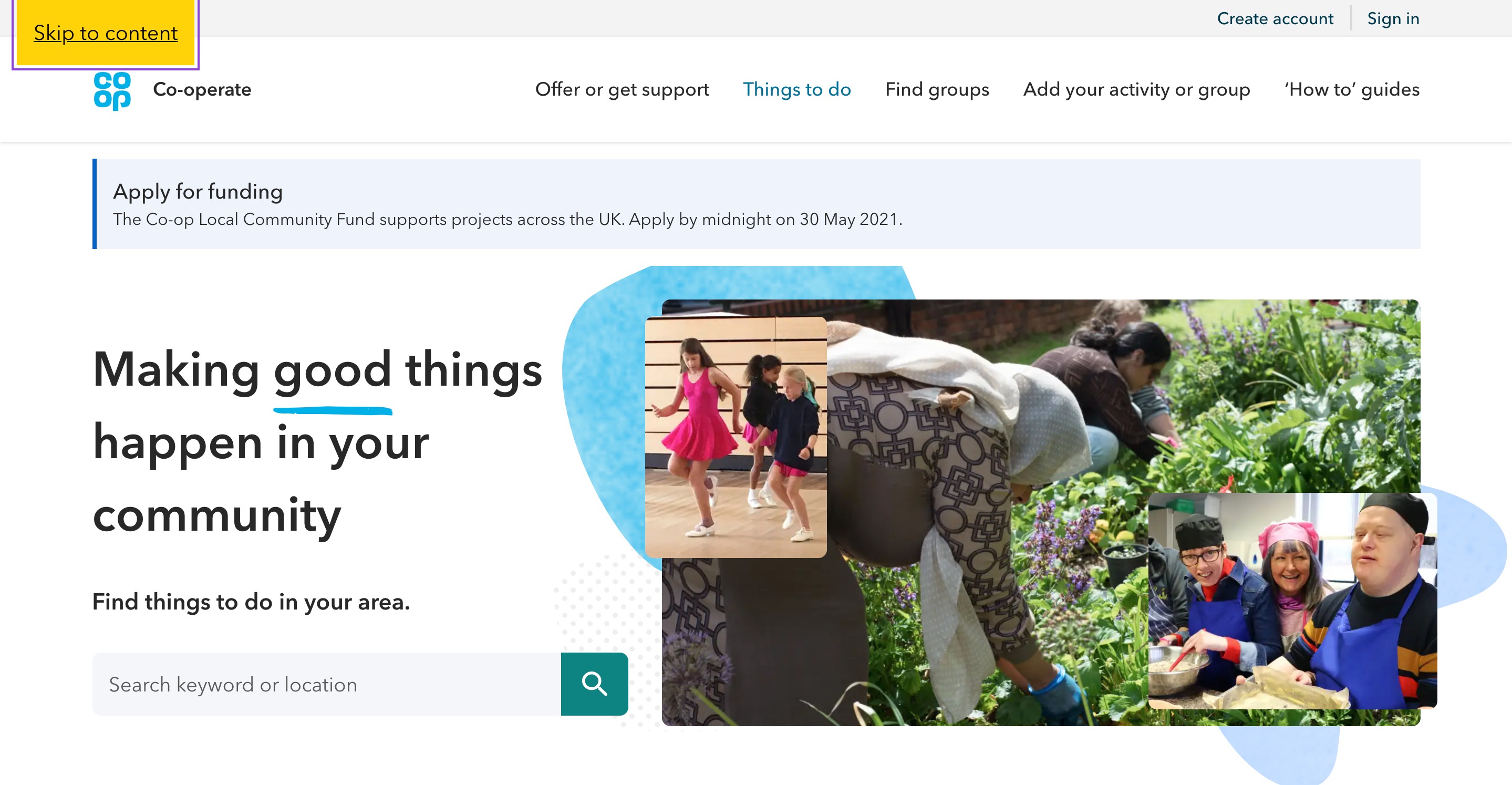In the ever-evolving landscape of web design, accessibility and user experience have become paramount. One of the pivotal features that contribute to a seamless online experience is the "skip navigationsearch" function. This feature allows users, particularly those utilizing screen readers or keyboard navigation, to bypass repetitive content and quickly access the main areas of a webpage. By implementing this function, web developers can ensure that their sites cater to all users, regardless of their abilities. As we delve deeper into this topic, we aim to uncover the significance of skip navigationsearch, its implementation, and the benefits it brings to web users.
Understanding how to effectively incorporate skip navigationsearch into your website is not just a technical requirement but an essential aspect of creating an inclusive digital environment. Users today demand efficiency; they want to find what they are looking for without unnecessary delays or distractions. By prioritizing this functionality, web developers can enhance the overall user experience and foster a sense of inclusivity. Furthermore, search engines are increasingly valuing accessibility features, making this an important factor in search engine optimization (SEO).
As we explore the concept of skip navigationsearch in detail, we will address various questions surrounding its implementation, effectiveness, and relevance in modern web design. From understanding its basic functionality to evaluating its impact on user experience, this guide serves as a comprehensive resource for anyone looking to enhance their website's navigability.
What is Skip Navigationsearch?
Skip navigationsearch is an accessibility feature embedded in websites that allows users to bypass repetitive navigation links. This is particularly beneficial for users relying on keyboard navigation or assistive technologies. The primary aim is to streamline the user experience so that individuals can access the main content directly without being hindered by constant navigation menus.
How Does Skip Navigationsearch Work?
The functionality of skip navigationsearch typically involves a link placed at the top of a webpage. When clicked, this link redirects users past navigation menus and directly to the main content area. It is often implemented using a simple HTML anchor tag that targets the main content section of the page.
Why is Skip Navigationsearch Important?
For many users, especially those with disabilities, navigating a website can be a daunting task. Skip navigationsearch plays a crucial role in enhancing accessibility, allowing users to:
- Quickly access desired content
- Avoid repetitive navigation links
- Improve overall browsing efficiency
How Can You Implement Skip Navigationsearch on Your Website?
Implementing skip navigationsearch is straightforward. Here are the steps to follow:
- Add a link at the top of your HTML document that points to the main content area.
- Ensure the link is visible only to screen readers or keyboard users, providing a seamless experience.
- Test the functionality across different devices and assistive technologies to ensure compatibility.
What Are the Benefits of Skip Navigationsearch?
The advantages of implementing skip navigationsearch extend beyond accessibility. Some key benefits include:
- Enhanced user satisfaction and retention
- Improved SEO rankings due to better accessibility
- Lower bounce rates as users find what they need quickly
Are There Any Challenges Associated with Skip Navigationsearch?
While the implementation of skip navigationsearch is beneficial, there can be challenges, such as:
- Ensuring proper coding and testing across different platforms
- Balancing aesthetics with functionality
- Training staff or developers on best practices for accessibility
Who Can Benefit from Skip Navigationsearch?
Skip navigationsearch benefits a wide range of users, including:
- Individuals with visual impairments
- Users with motor disabilities
- Anyone using keyboard navigation
How Does Skip Navigationsearch Affect SEO?
Search engines prioritize accessible content. By implementing skip navigationsearch, websites can enhance their SEO efforts by:
- Improving crawlability for search engine bots
- Providing a better user experience, leading to increased dwell time
- Encouraging social sharing and backlinks due to higher user satisfaction
Conclusion: The Future of Skip Navigationsearch
As web accessibility continues to gain importance, skip navigationsearch will likely become an integral part of website design. By focusing on inclusive practices, web developers can create environments that cater to all users, ultimately improving accessibility and user experience. As we move forward, embracing these functionalities will not only benefit users but also create a more equitable digital landscape.

